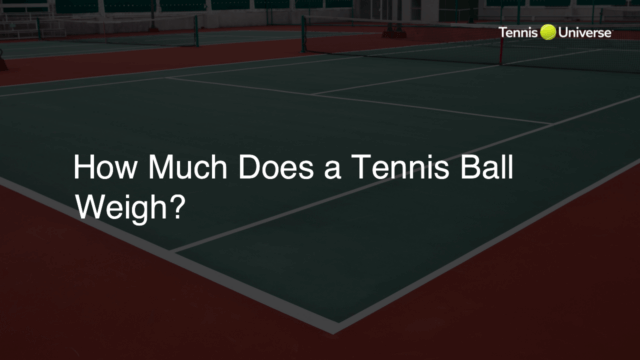In tennis, tiebreaks are used to decide a set when the score is 6-6. Players alternate service points, starting with the server of the set. The first to reach 7 points with a lead of 2 points wins the tiebreak and the set. Points are scored as 1, 2, 3, etc., and players switch court sides after every 6 points. The player who did not serve in the tiebreak serves in the following set.
Understanding Tiebreaks in Tennis
Tiebreaks play a crucial role in tennis matches by settling the score when a set reaches 6-6. In this post, we’ll explore the key aspects of tiebreaks and how they work in tennis, ensuring you have a clear understanding of this decisive part of the game.
Starting a Tiebreak
When the score reaches 6-6, a tiebreak is initiated automatically. The player who served the 12th game in the set starts the tiebreak by serving the first point. This begins the alternating service pattern for the entirety of the tiebreak.
Alternating Service Points
Throughout the tiebreak, players take turns serving two consecutive points, starting with the server from the previous set. Once the server has served one point, the opponent serves the next two points, and so on. This continues until a winner is determined.
Scoring and Winning the Tiebreak
In a tiebreak, points are scored numerically, counting from 1 onwards. The winner of the tiebreak must achieve at least 7 points and maintain a lead of 2 points over their opponent. If both players reach 6 points, the tiebreak will continue until the two-point advantage is gained by one player, securing their victory.
Switching Court Sides
During the tiebreak, players switch court sides after every 6 points. This ensures fairness by exposing both players to different playing conditions throughout the tiebreak, as they would experience with their tennis racket during regular play.
Beginning the Next Set
Once the tiebreak is completed, the player who did not serve during the tiebreak serves to start the following set. This helps maintain balance in the match and provides equal opportunity for each player to hold their service games.
Strategies for Playing a Successful Tiebreak
Tiebreaks can be mentally and physically challenging as they are crucial in determining the outcome of a set. Here are a few tennis tips to help you stay focused and play effectively during a tiebreak.
Maintain Consistency
Consistency is vital in a tiebreak, especially with your serve. Aim to minimize double faults and serve at a high percentage to keep pressure on your opponent. By executing well-placed serves, you can create opportunities to set up easy points.
Control Your Emotions
Staying emotionally calm can have a significant impact on your performance. Handle any pressure or nervousness by focusing on your breathing and staying in the present moment. It’s crucial not to dwell on previous points or mistakes, as this can be counterproductive during a high-stakes tiebreak.
Play to Your Strengths
Often, tennis players attempt to change their game to compensate for the intensity of a tiebreak. However, this can be detrimental to your performance. Instead, play to your strengths with your tennis racket and stick to your game plan. If you have a reliable groundstroke, for example, exploit it to create an advantage during the tiebreak.
Tiebreak Variations: Classic and Match Tiebreak
While the standard tiebreak is widely used, tennis features a few variations to further enhance the excitement and unpredictability of the game.
Classic Tiebreak
Also known as a “12-point tiebreak,” the classic tiebreak is played to decide sets tied at 6-6 in regular matches. As explained earlier, the first player to reach 7 points, with a minimum lead of 2, wins the tiebreak and the set.
Match Tiebreak
Also known as a “10-point tiebreak” or “super tiebreak,” this variation is used in doubles matches and some singles competitions instead of a third or final set. The player or team that scores 10 points with a 2-point margin wins the tiebreak and the match. Match tiebreaks are commonly implemented in ATP and WTA tournaments to save time and reduce player fatigue.
Now that you’ve learned about tiebreaks, tennis tips, and their unique variations, you’re better equipped to handle the pressure and excitement of these decisive moments in tennis.
FAQ Section: Tiebreaks in Tennis
Here’s a handy collection of frequently asked questions related to tiebreaks in tennis, to help you quickly find answers and clarify your understanding of this unique aspect of the game.
What is a tiebreak?
A tiebreak is a mechanism used in tennis to decide the winner of a set when the score is 6-6. Players alternate service points, and the first to reach 7 points with a lead of 2 points wins the tiebreak and the set.
How do players alternate service points in a tiebreak?
During a tiebreak, players take turns serving two consecutive points. The player who served the 12th game of the set serves the first point in the tiebreak, followed by the opponent serving the next two points, and so on.
Do players switch sides during a tiebreak?
Yes, players switch court sides after every 6 points in a tiebreak, ensuring fairness by subjecting both players to different playing conditions throughout the tiebreak process.
What is the difference between a classic tiebreak and a match tiebreak?
A classic tiebreak, or 12-point tiebreak, is played to decide sets tied at 6-6 in regular matches, with the winner being the first to reach 7 points and a 2-point lead. A match tiebreak, or 10-point tiebreak, is used in doubles matches and some singles competitions as a replacement for a final deciding set. The winner of a match tiebreak is the first to reach 10 points with a 2-point margin.
What strategies can improve my performance in a tiebreak?
To excel in a tiebreak, focus on maintaining consistency in your serve, controlling your emotions, and playing to your strengths. Prioritize minimizing mistakes and sticking to your game plan to create an advantage during the tiebreak process.












